What to Do if You’re Caught Driving in a Snow Storm
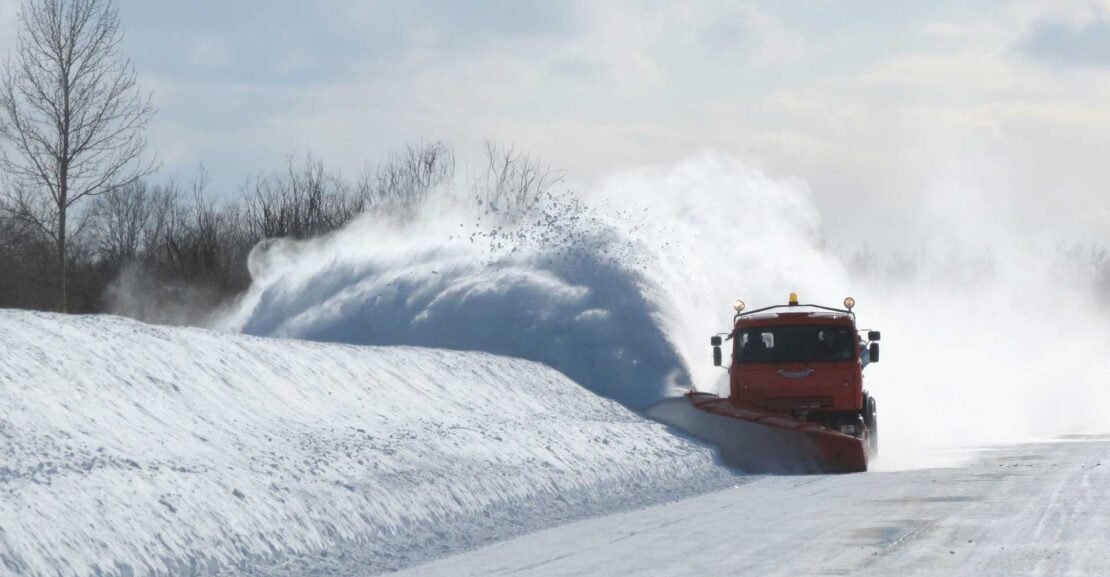
Driving on a snowy road is routine for some of us and view it merely as a part of the winter season. After all, many happily anticipate longer vacations during the snowy season with plans of road travel; and then for many, driving is part of the job. But what happens when you are en route, and a routine snowfall escalates to a blizzard, what do you do?
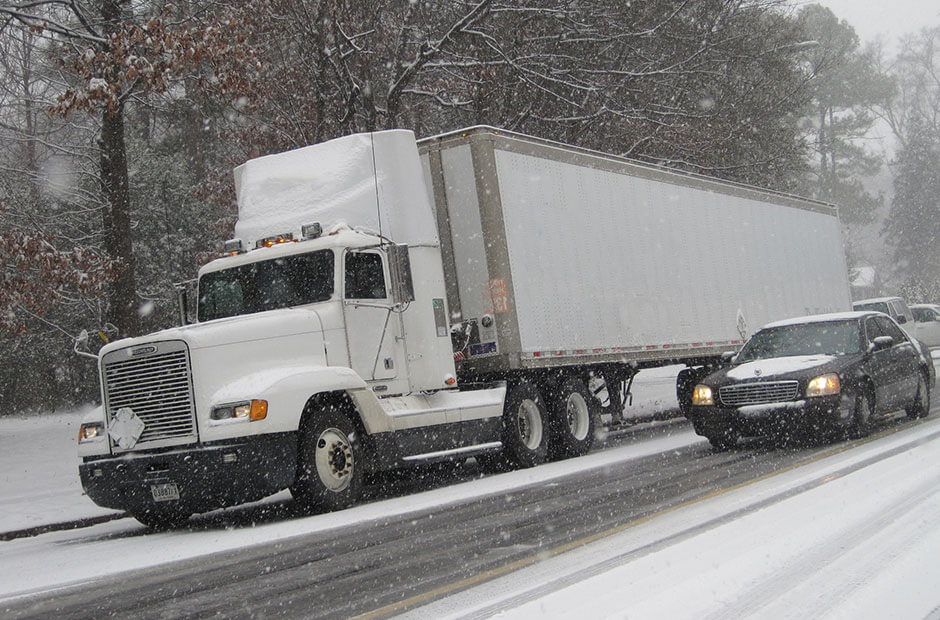
How to Drive in the Snow
Whenever there is a risk of major winter weather, travelers are advised to stay home and avoid driving or use public transit. Snowy and icy conditions make road travel extremely dangerous. Oftentimes, the snowfall rates change drastically in a matter of moments and can impact travel conditions quickly. Visibility is lowered making it difficult to see more than a few feet ahead and ice-packed roads create unsafe driving conditions. According to the AAA Foundation for Traffic Safety, more than two-thousand deaths each year happen on the road during winter storms.
While it is best to avoid driving in the snow or ice, sometimes it is necessary. Therefore, as the winter months approach you should prepare ahead of time so if you are caught out on the road during a blizzard, you have a better chance of staying safe.
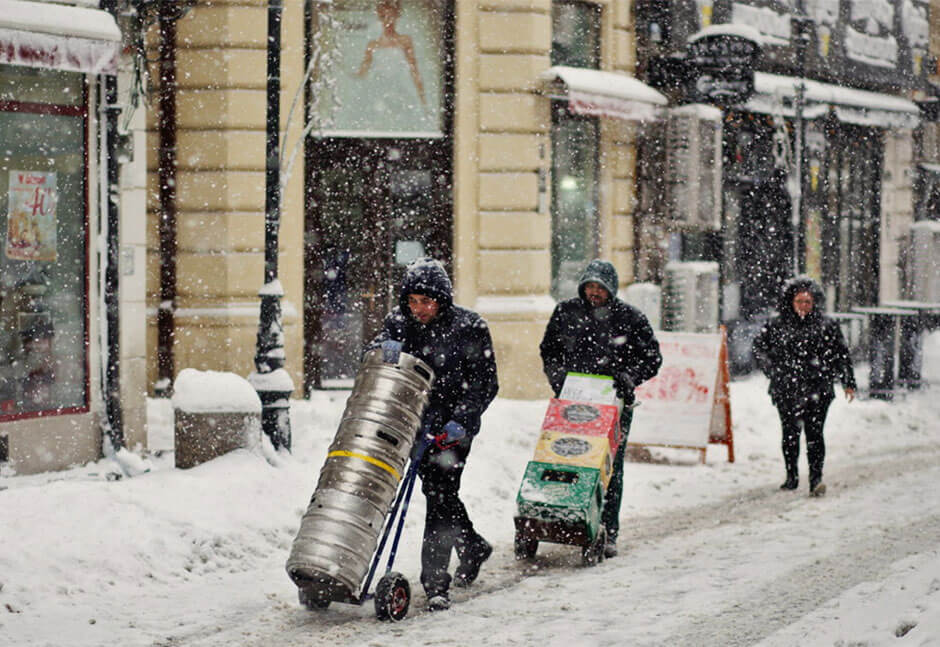
Make Preparations Ahead of Time
If you know you will be traveling during the winter months take these few precautionary measures so traveling during heavy snowstorms will be as safe as possible.
- Replenish antifreeze and other fluids and keep extra in the vehicle.
- Replace windshield wipers.
- Get winter tires.
- Havekitty litter for tire traction if necessary.
- Fill up the gas tank.
- Pack an emergency kit that includes food, gloves, hat, extra winter clothes, hand warmers, flares, jumper cables, shovel, ice scraper, flashlight, batteries, candles, matches, radio, snow melt, water and blankets.
The gas tank should never be less than half full but when traveling in the winter, this is a must for safety reasons.
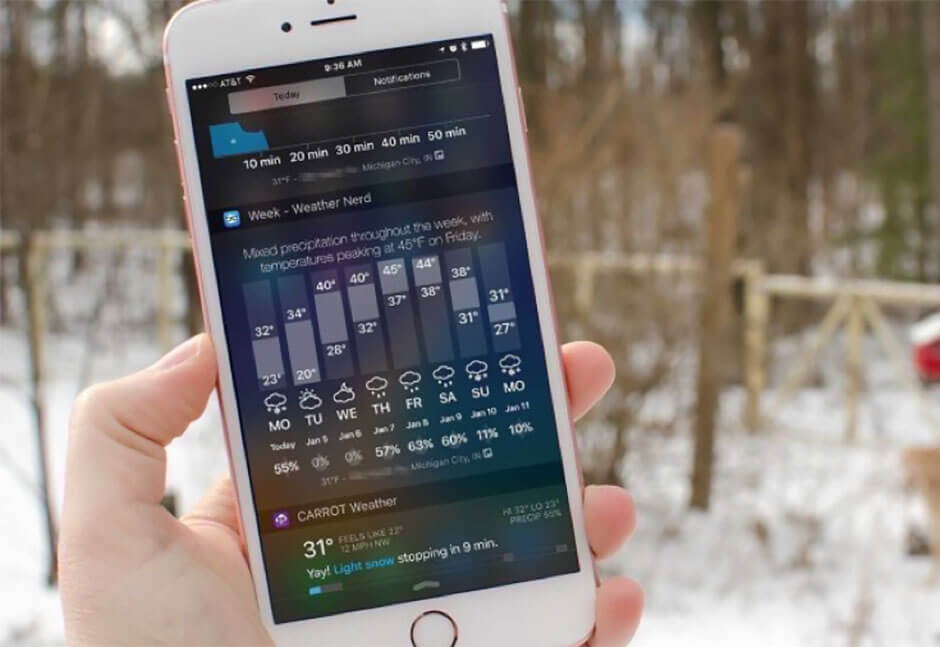
Before Heading Out
For those times when it is absolutely necessary to travel in a heavy snowstorm, there are some last minute details you should review.
- Check weather forecasts for the latest updates on road conditions where you will be traveling, paying careful attention to passes and isolated roads. Sometimes roads are closed during extreme weather conditions.
- Notify someone of your route and expected time of arrival to the destination.
Prior to heading out, clear the headlights and windshields of any ice or snow. In addition to this, clear off the hood and roof of your vehicle. People frequently dismiss this as unimportant, yet it can pose danger to you and the vehicles traveling behind you.
Also, be sure to check that your exhaust pipe is clear of snow. The exhaust does not necessarily keep snow melted off and snow build up. When it does, the gasses can potentially leak into the vehicle, so take time to clear it off occasionally.
Use Caution and Be Patient
Driving in the snow is not the time to be in a hurry. Drive slowly and keep your distance from other vehicles on the road to allow for extra stopping distance. Be prepared for your travel time to increase substantially in a blizzard. Deadlines and timeframes are low priority compared to your safety.
Snowstorms commonly bring about the danger of low visibility as the winds create whiteout, so if you must drive under these conditions take every precaution possible to help ensure you arrive safely at your destination.
Refrain from using cruise control during snowfall; even when traveling on long stretches of road. When driving in a blizzard, the unpredictability of what is ahead may include black ice, icy patches, someone driving extremely slow or an accident, so give your full attention to driving.
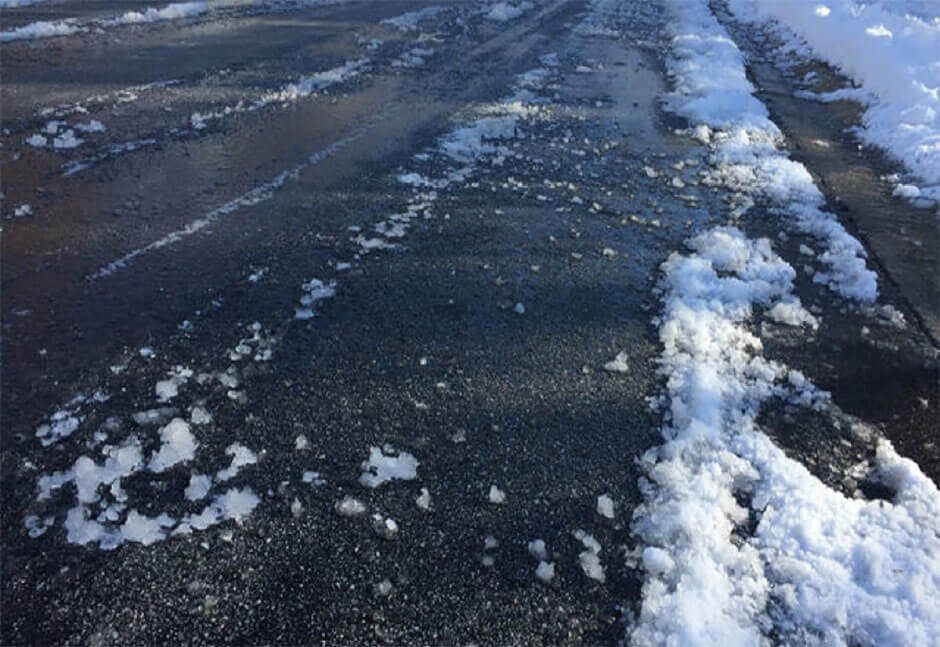
Be Wary of Black Ice
When ice forms on roads, it is not always visible. Sometimes the road will look wet when in fact it is black ice; making it some of the most dangerous when driving. Multiple winter accidents are caused from black ice, sending cars skidding out of control.
The prime times for black ice to develop are when the air is at a temperature of 32 degrees or lower and it is raining or snowing. It can also form during the late evening as water on the roadways begin to refreeze with the colder temperatures. Pay extremely close attention to the roads during winter weather watching for dark spots that appear wet. It is quite common for black ice to form on bridges and exits, so use extra caution in these areas.
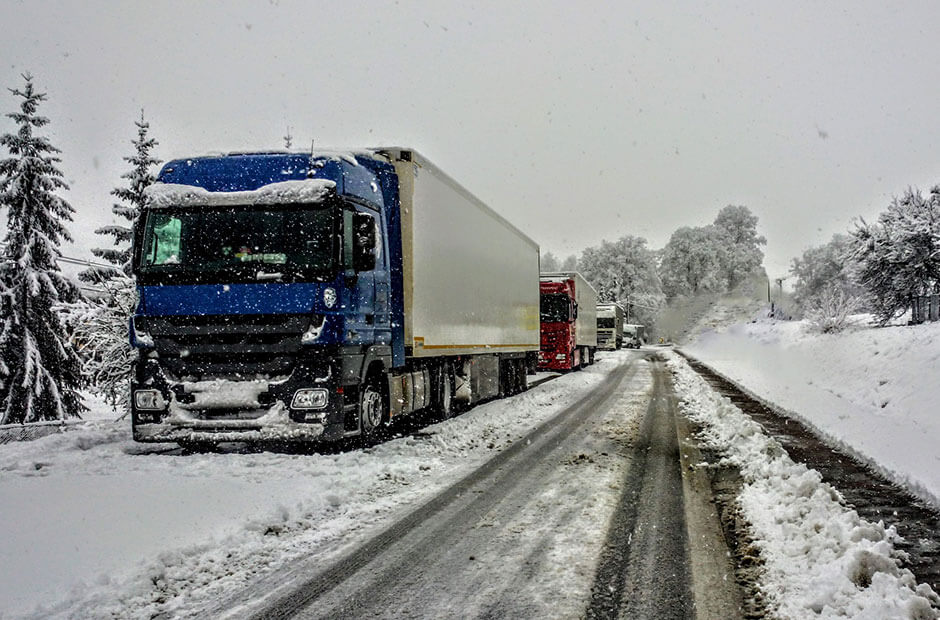
Take It Slow and Easy
Take it slow at intersections, stop signs and lights and be mindful of other drivers. Avoid making any abrupt changes in your speed and likewise do not make fast turns or abrupt changes in direction when driving in the snow. Always apply pressure slowly to the brake and gas pedals. The stopping distance that you allow on snowy roads should be doubled in comparison to your rate of deceleration on dry roads. If you begin to skid, you can regain control of the vehicle by steering into the direction that you are skidding.
Make yourself visible to others, using headlights and fog lights if you have them. If you find yourself needing to drive extremely slow, consider using the hazard lights to alert other drivers. Be diligent about using turn signals as well.
Driving Uphill
Driving uphill can be difficult on snow-packed roads, especially if you don’t have winter tires on your vehicle. As you make your way up the incline, avoid gassing it even if you are sliding because this can cause you to spin, losing control of the vehicle. It is better to increase your speed prior to approaching the hill, allowing inertia to work in your favor moving up the hill. If you do find yourself sliding resist the temptation to stop on the hill, which will only make things worse. As you make your way downhill, be sure to use just as much caution, slowly applying pressure to the brakes.
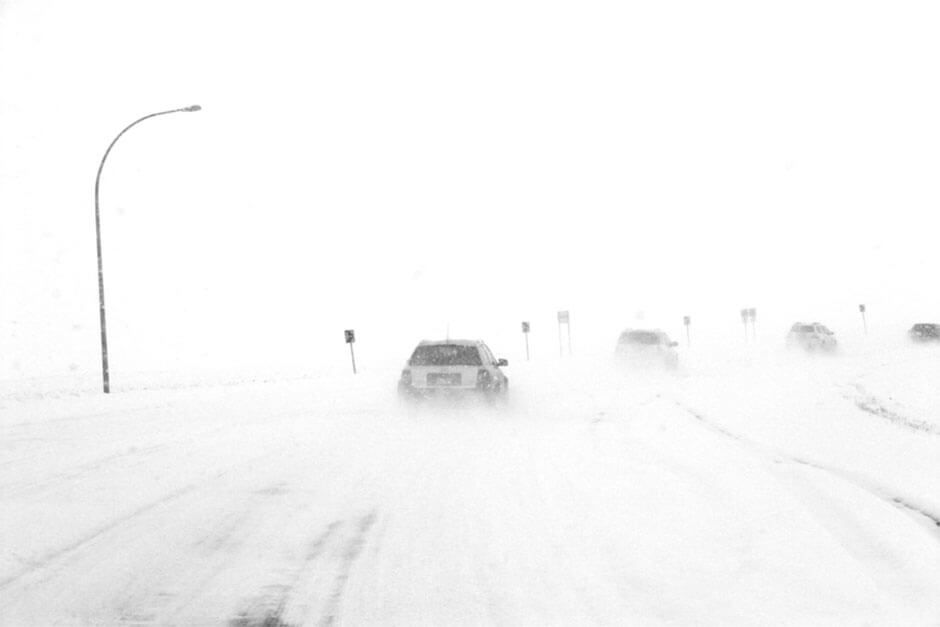
Wait Out the Whiteout
Regardless of how great of a driver you are and how well-prepared you are, whiteout can reduce visibility to extremely dangerous levels. Know when it is time to stop and wait it out. When you feel it is too difficult to see other vehicles or question their ability to see you, it is safer to pull over and park. If there are no parking areas in the near vicinity, slowly pull to the shoulder of the road and turn on your hazards.
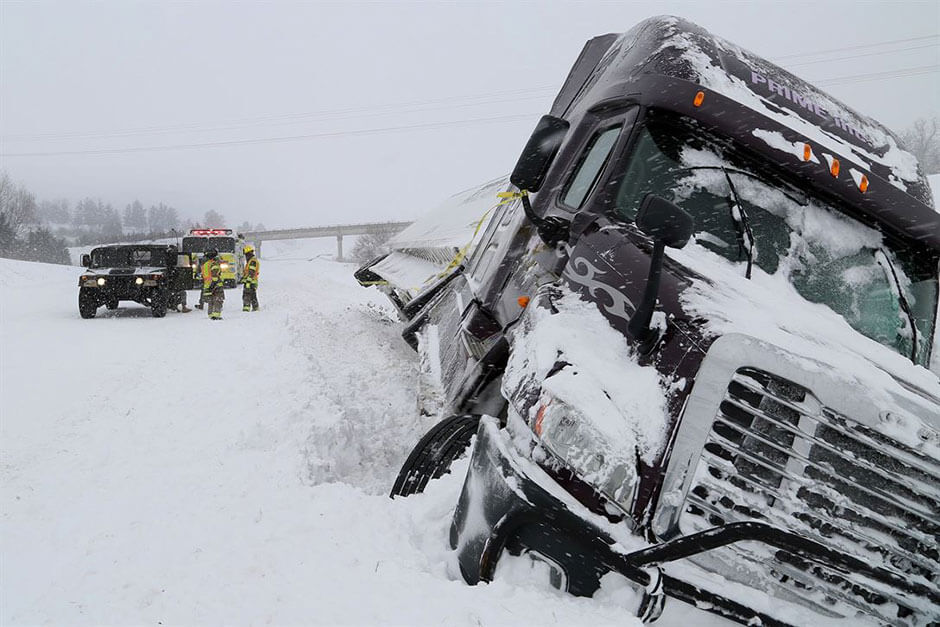
What to do if You Become Stranded
Occasionally, no matter how many precautions are taken, vehicles become stranded. This can be caused by engine or tire troubles, hitting a snowdrift, sliding into a ditch or an array of other scenarios. If you find yourself stranded, make the most of the items packed in the emergency bag. When this occurs, do the following:
- Check the exhaust pipe and clear it of snow, if necessary.
- If there are no buildings or houses in sight to seek assistance, stay in your vehicle and buckle up. Even though you are sitting still, your vehicle could be hit by oncoming traffic and remaining buckled will keep you safer.
- Conserve your gas and turn the vehicle off. It can be turned on periodically for short intervals to warm up.
- Put out flares near your vehicle and run the hazard lights so you’ll be visible to others.
When traveling in dangerous winter conditions allow plenty of time to arrive at your destination. Whether you travel occasionally or routinely, taking extra measures to ensure safety helps everyone. While we cannot control carelessness from others, we can do our part in keeping the roads safe.
Stay in the Know
The Suppose U Drive family wishes safe travels to everyone. With 80+ years of serving the trucking & distribution industries we have met numerous people and acquired a ton of knowledge that we can pass off to our loyal followers. We hope you’ll join our online community by signing up for the newsletter. It offers insight into the industry, news on the latest trends, and safety tips for the road. Visit our sign up page to join today!

